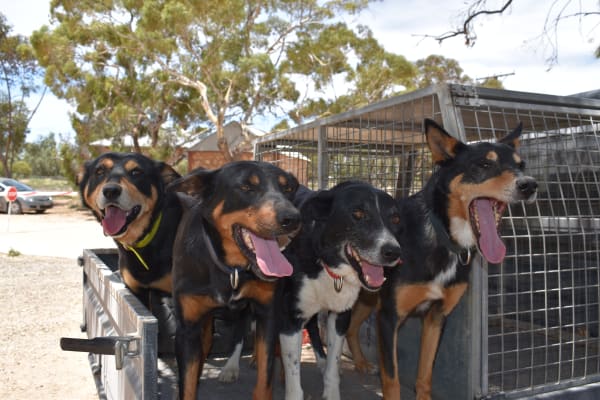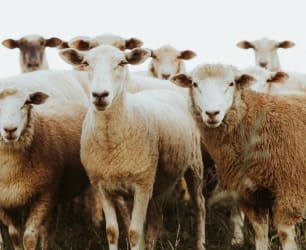WORKING dogs are often one of the most valuable assets on a livestock property – and Pyap’s Lee Mickan has his own army by his side every day.
Lee was just 19 when he got his first black and tan kelpie, an interest that started from an early age.
“I grew up on a farm and I had a good friend in Pinnaroo who was right into it,” he explained.
“He helped me train him and from there it has just blossomed.
Originally from Pinnaroo, Lee predominately trains kelpies to help himself and others with their farm work. He also has a couple of border collies to call his own, with his dogs working mainly sheep, but cattle and goats too.
“I have a pretty handy border collie called Joker; I have always just liked black and tan kelpies, so I got one of them to start with,” he said.
“I have had a varying range of different-coloured dogs over the years: red and tans, reds, blacks, but I predominately have a kelpie team.”

Lee and his family breed a maximum of two litters each year, and have been breeding kelpies for 15 years. They keep one pup from each litter and sell the rest to other farming families or kelpie lovers.
Training the dogs is no easy feat. Lee starts the training when the dogs are between three to four months old, making sure they are perfectly up to scratch before coming to work with him at Wanbi Park.
“I get up in the morning, go over to the kennels and pick the six to eight dogs that are coming to work at the farm,” he said.
“Then we go and start our day, get some sheep and do some yard work.”
As soon as the young pups show they are interested in stock, Lee starts training them on the weekends at home. It is usually an eight-month process until the pups are ready to be used as working dogs.
“I usually show our little pups… the sheep between eight to 10 weeks old,” he said.
I look for natural instinct and usually most of them show a bit by then.
“The dogs really start their training by four months old when their legs are a little bit longer and they can keep up with a few quiet lambs. Then they go on from there.
“I just go through the stages, until they are fully trained by 12 months. The dogs are at work with me from then on.”
When looking for the perfect working dog, Lee said any herding type dog (kelpie, border collie, koolie) is easy to train, provided it has a natural instinct.
“You can’t teach a dog that doesn’t have natural instinct to do something it doesn’t naturally want to do,” he said.
“We start with three to four quiet sheep, because the quickest way to train a working dog to the level that you need them to go to work at is to build confidence.
“Every time those sheep are walking away from that pup towards me, the dog is having a win so it builds its confidence.
Of course, they get older, they get bigger and more confident.
"So, we are just trying to build their confidence up to a point where they are happy and love doing what they do.”
One thing that comes with breeding and training kelpies is working dog auctions, with Lee recently selling one of his kelpies, Diesel, for $14,000 at the 2022 Lucindale Working Dog Auction.
“Diesel is a dog that we bred here and he was two years old when we sold him,” Lee said.
“He is the highest price we have sold, and he was the third highest price at auction on the day, so I am happy with that.”
Lee said Diesel was the perfect example of a working dog, possessing a “great attitude, huge engine and a huge drive to work”.
“It didn’t matter how hot it got, how hard it got,” he said. “Diesel has got a huge heart and would just go.”

Every now and then Lee gets a dog with less appetite for work, posing a challenge.
“A few pups I have sourced from elsewhere lack desire and drive, and they don’t suit my job,” he said.
“We try to find them a home where they are suited to. If they are going to be a lounge lizard and lay around, I’ll find them a pet home.
“If they are a little bit too what I call ‘paddocky’, I’ll obviously find a farmer looking for a paddock dog and try and place them where they need to go.
Then you can get the flip side of it; you can get a dog that’s just all go, full noise, a bit hard headed and ignorant, and that causes the other end of the challenge.”
With so many dogs coming and going over the years, Lee said it was hard to remain detached.
“With Diesel, we decided as a family at six months he was going to be an auction dog, but you still build the bond with them and the dog is still your mate,” he said.
“There’s dogs you do get attached to and there’s dogs that you don’t get attached to.
“They can brighten your day up when you are having a bad day pretty quickly.
“I love training them and working with them. I get to spend every day with my best mates.”






